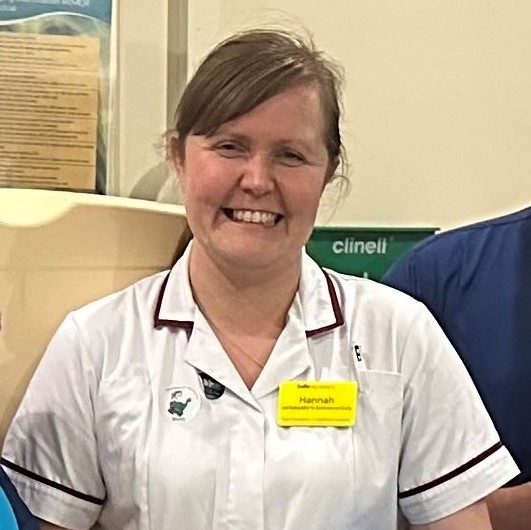What is your role?
I’m a lead radiographer in the imaging department at Harefield Hospital. I’ve worked here for 10 years.
Most people will have had an X-ray at some point, but they might not realise how broad the field of radiography actually is – from CT and MRI to cardiac imaging and interventional work in the cath labs. In our team you’ll find radiographers, radiologists, physicists, and admin staff, to name a few. Radiography is a vital part of healthcare that often happens behind the scenes.
Tell us about a typical day
I am responsible for performing diagnostic tests like X-rays and CT scans. No two days are the same in radiography, which is what makes it so rewarding. I could be doing anything from a routine ward chest X-ray to supporting the cardiology team during an emergency procedure. We move the imaging equipment, position the patient, and help guide the cardiologist to get the right views during treatment, which will help with diagnoses and inform treatment.

As a heart and lung specialist hospital, our specialist imaging services support the whole spectrum of cardiothoracic medicine and surgery, including heart and lung transplantation. Often radiography tests are planned, because a patient will have been referred to us by their GP or by another hospital. But sometimes we are needed for emergencies too. We’re a 24/7 service, so we provide on-call cover for patients having heart attacks as well as if our ward patients need a CT or an X-ray imaging at any time of the day or night. Because our specialist emergency service is on site, we’re ready to go when we’re needed, which means Harefield is one of the fastest heart attack treatment centres in the country.
It’s a fast-paced and intense job, but incredibly rewarding to know you’re helping to save someone’s life.
What’s the best thing about your job?
Definitely the variety and the teamwork. In radiography at Harefield, you’re part of so many different areas of care, from diagnosis to treatment. It’s different from areas like A&E, where patients come in for a scan and are moved on. Here, because we’re a smaller, specialist hospital, we really get to know our patients and colleagues. You might see the same patient several times throughout their treatment journey, which is something you don’t always get in larger hospitals. This is particularly the case with our transplant patients – we often get to know them, see how they’re doing, say hello to them in the corridors.
It’s a lovely place to work, despite the circumstances of many of our patients – who are often very very unwell. There’s also a great sense of camaraderie among staff. Our management team is incredibly supportive and we all work hard to get the best outcomes for our patients. So it feels like we’re making a difference.
Why did you get into healthcare?
I actually discovered radiography by chance! Having done physics, chemistry and maths at school, I was unsure what to do after A-Levels. But on a holiday to South Africa to visit family, my uncle, who was a radiographer, took me along to shadow him at work in a Cape Town hospital one day. He showed me the radiography department, which I found fascinating — the technology, the science, and the mix of patient care and imaging. I liked that you could still work directly with patients, but in a slightly different way to nursing or medicine.
I trained in radiography soon after, and that was 20 years ago — it’s amazing to see how much the profession has advanced since then, especially with digital imaging and AI.
What motivates you in your job?
We play a crucial role in a patient’s journey. Knowing that every scan we perform contributes to their care plan feels really gratifying.
The pace of change in the field is exciting too. We recently celebrated World Radiography Day, which marked 130 years since Wilhelm Roentgen discovered the x-ray in 1895. Radiography has evolved massively since then. When I first started, some radiology specialities were still using film. Now everything is digital, and we’re using advanced CT scanners that can capture the whole heart in a single heartbeat, which results in a better image while using a lower radiation dose. AI is also starting to play a role, helping us analyse scans faster.
The challenge for us as radiographers is to keep up with these advances. Ultimately, it’s all about getting the best possible image at the lowest dose, so we can give our patients the best care.
